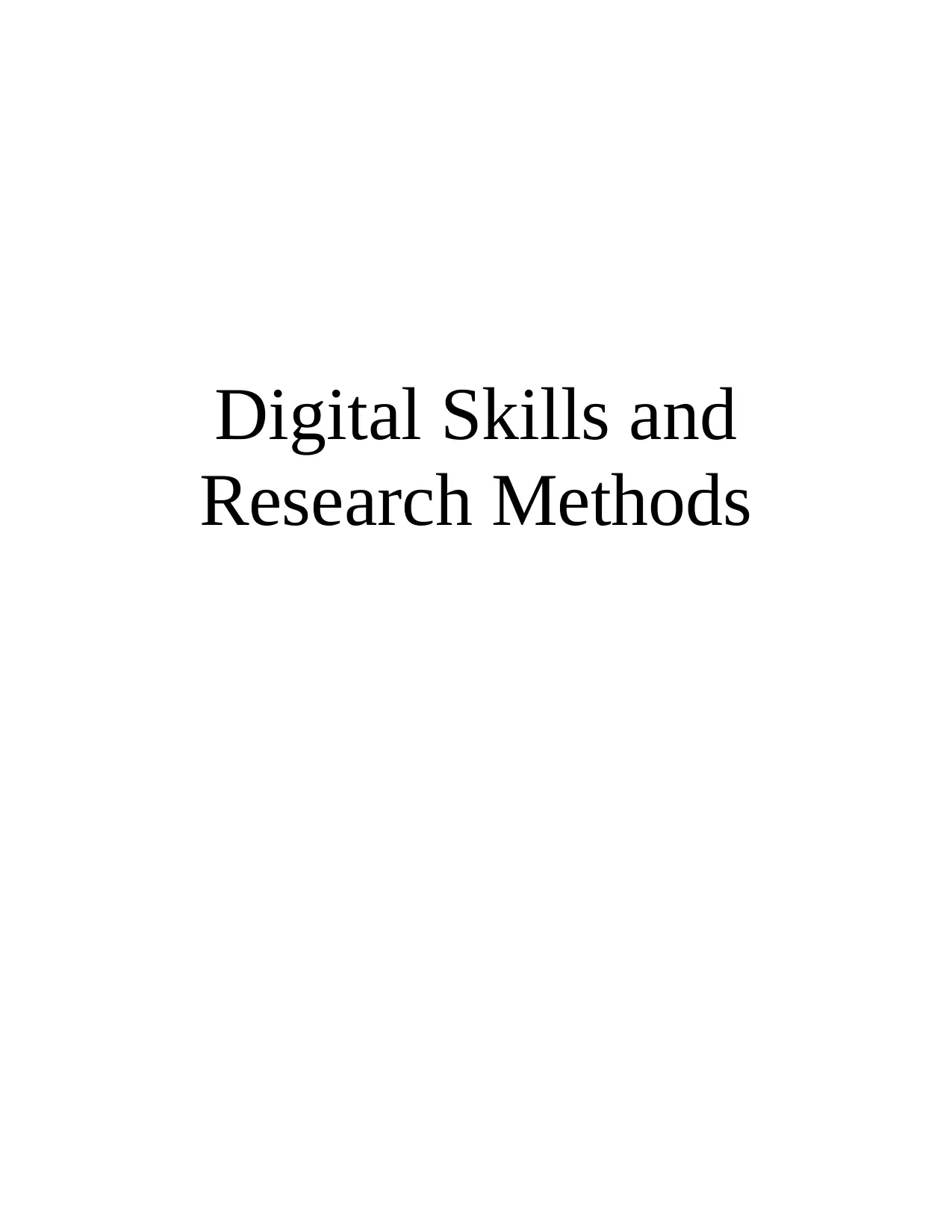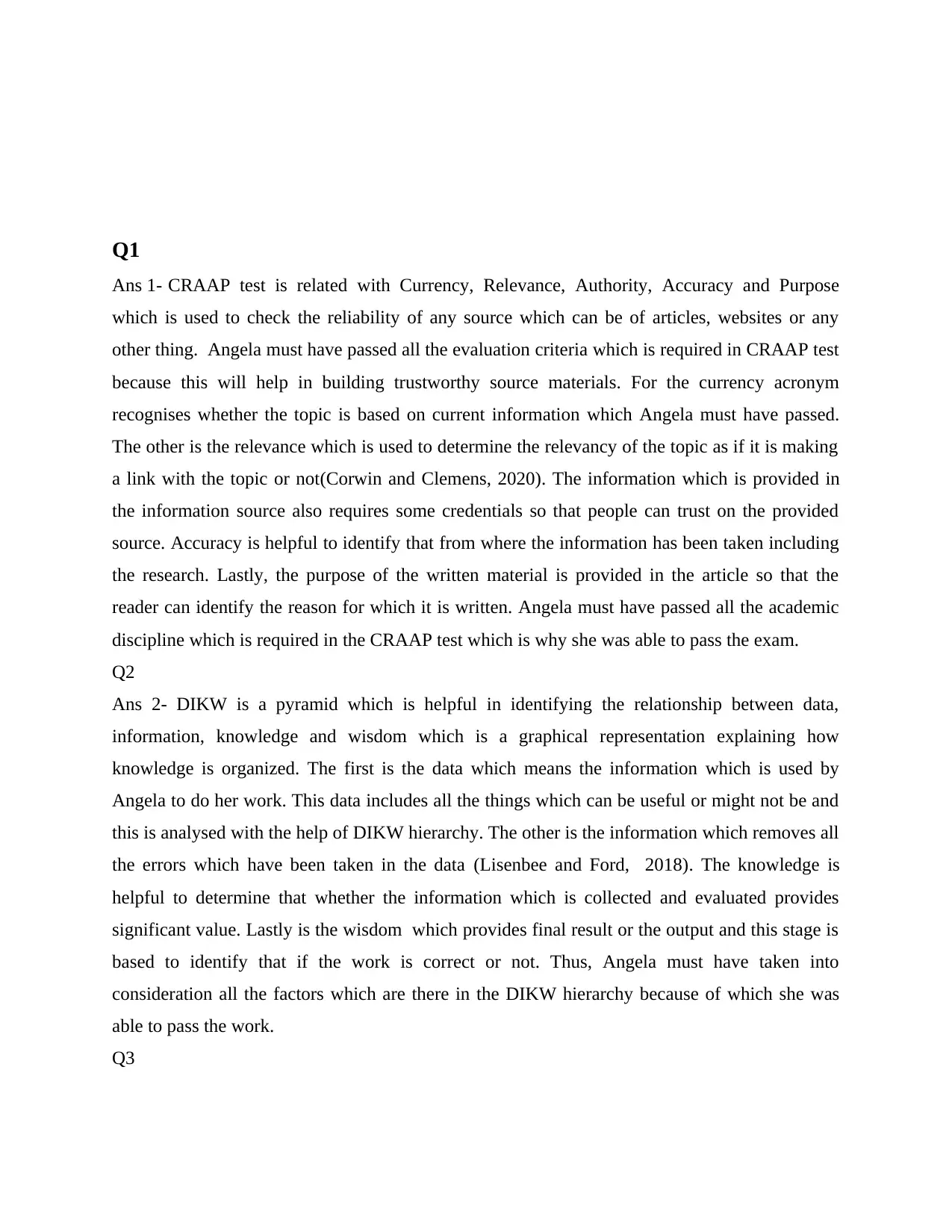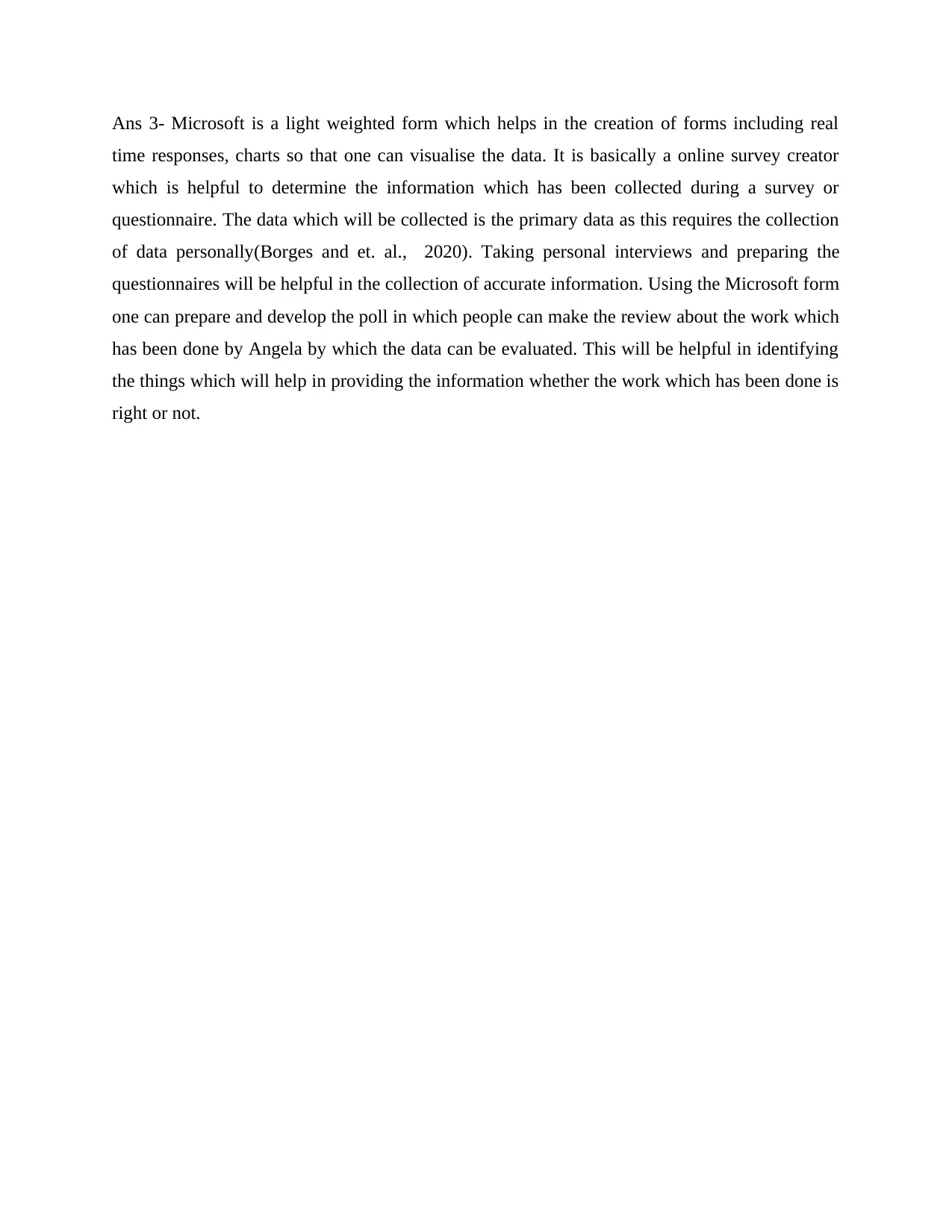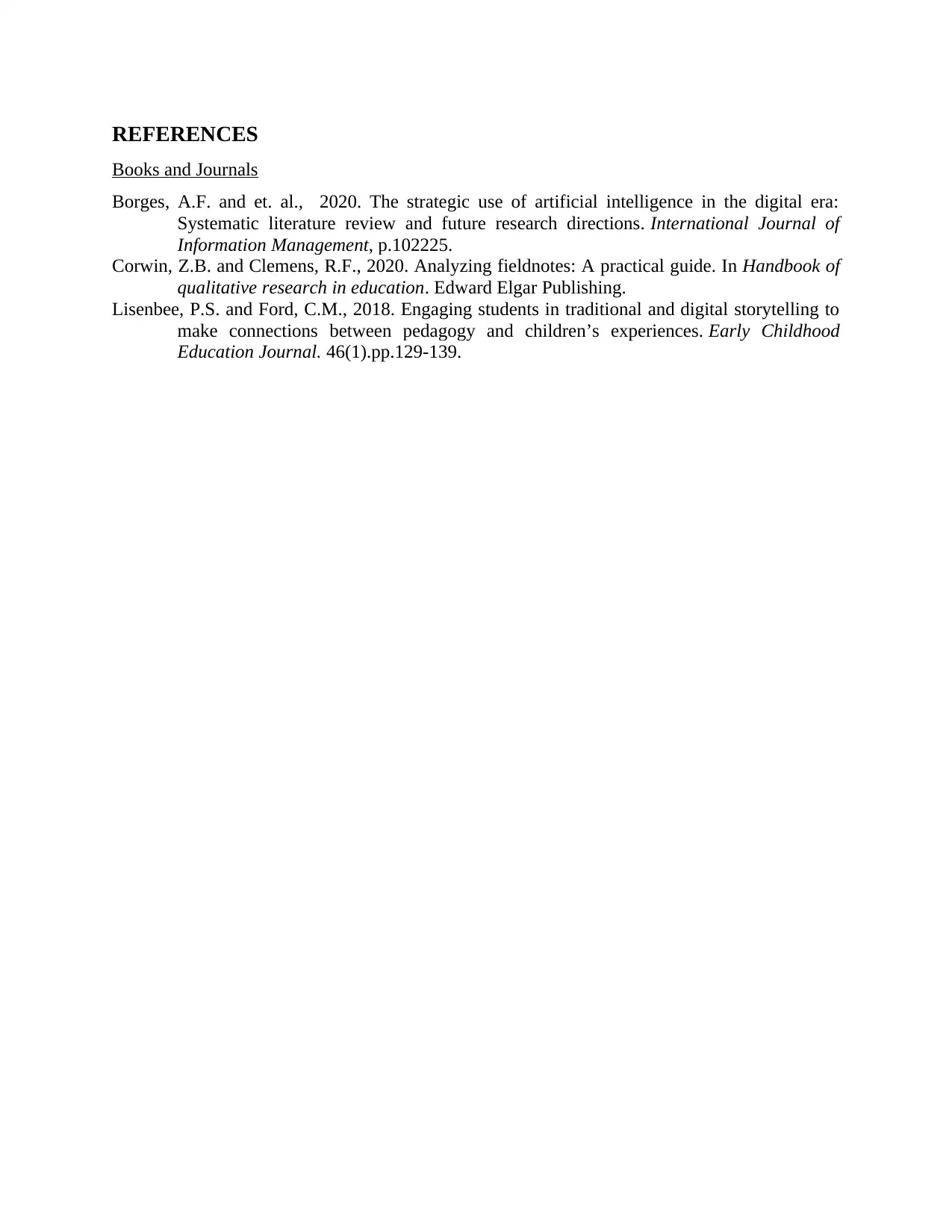Digital Skills & Research Methods: DIKW Hierarchy and Microsoft Forms
VerifiedAdded on 2023/06/18
|4
|665
|80
Homework Assignment
AI Summary
This assignment solution explores the application of the CRAAP test for evaluating source reliability, the DIKW pyramid for understanding the relationship between data, information, knowledge, and wisdom, and the use of Microsoft Forms for data collection. The CRAAP test assesses currency, relevance, authority, accuracy, and purpose, ensuring trustworthy source materials. The DIKW pyramid helps in organizing knowledge, starting from raw data to actionable wisdom. Microsoft Forms facilitates online surveys and data visualization. The assignment emphasizes the importance of these tools and methodologies in digital skills and research methods, providing a comprehensive understanding of their practical applications. Desklib offers a platform for students to access similar assignments and study resources.
1 out of 4











![[object Object]](/_next/static/media/star-bottom.7253800d.svg)